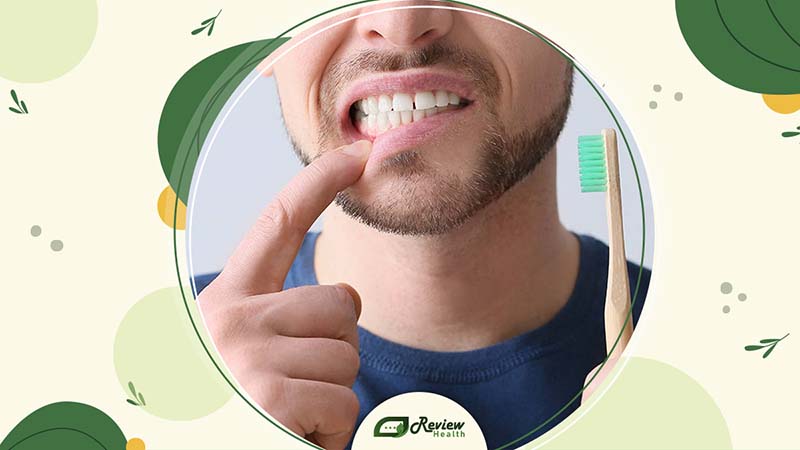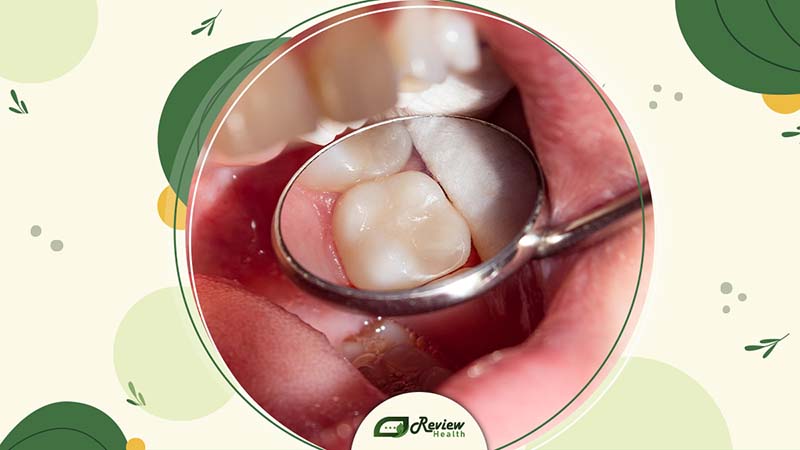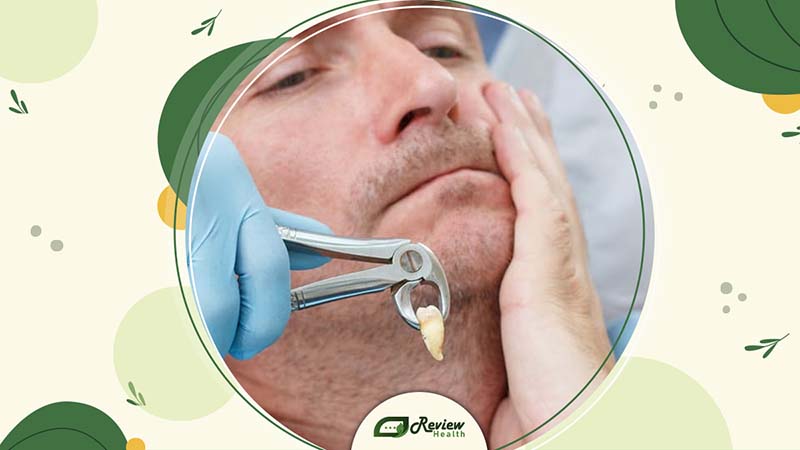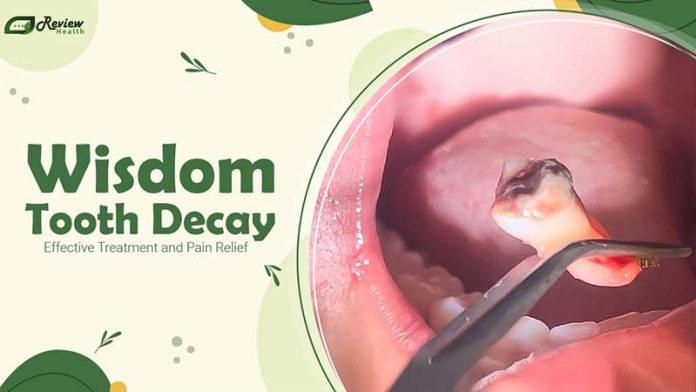Many people have experienced a cavity at some point. Cavities are quite common despite being preventable. They can form on any part of your tooth and affect any tooth, including wisdom teeth. If you’re dealing with wisdom tooth decay no pain, here’s what you should know. Visit Review Health for more details.
What Is a Wisdom Tooth? How Many Wisdom Teeth Does Each Person Have?

Wisdom teeth – also called third molars – are the last set of teeth to grow. They usually erupt (break through the gums) between the ages of 17 and 25. Sometimes, wisdom teeth grow in line with your other teeth and cause no problems. Other times, they become partially or completely stuck in your gums or jawbone. This is called impact. Impacted wisdom teeth can cause many oral health problems, including tooth decay, gum disease, and infection, and often there can be two, three, or even four wisdom teeth.
Read More:
- What Does Tooth Decay Smell Like and How Can We Effectively Eliminate Cavities Smell?
- Can Tooth Decay Cause High Blood Pressure?: Find Out Now For Timely Solutions
- Can Tooth Decay Cause Headaches? How to Treat It?
- Top 13 Essential and Vitamins for Tooth Decay: Enhance Oral Health
Signs to Identify Decay on Wisdom Tooth (Tooth Number 8)
Identifying decay on your wisdom tooth, also known as tooth number 8, is crucial for timely intervention. Keep an eye out for these telltale wisdom tooth decay symptoms:
- White spots on the teeth
- Brown or black dots on the enamel
- Brown Stain on Teeth
- Visible decay evident on X-rays
- Holes appearing in the teeth
- Sensitivity to pressure
- Halitosis or persistent bad breath
- Lingering unpleasant taste in the mouth
- Facial swelling
- Presence of fever
What Is the Cause of Wisdom Tooth Decay?
The position, shape, and accessibility of wisdom teeth significantly contribute to their vulnerability to tooth decay. Understanding these factors can help in effectively managing and preventing dental issues associated with wisdom teeth.
Misaligned Wisdom Tooth
Wisdom teeth often face misalignment or impaction due to limited space in the jaw. When misaligned, a wisdom tooth may adopt various positions, such as horizontal alignment, angling towards or away from the second molar, or inward or outward angling. These deviations hinder effective cleaning, trapping food debris and fostering bacterial growth, ultimately promoting decay.
Incorrect Oral Hygiene

Situated at the rear of the mouth, wisdom teeth pose challenges for regular brushing and flossing. Inadequate oral hygiene in these regions can lead to plaque and tartar buildup, heightening the risk of decay. Regular dental visits and employing tailored cleaning methods for inaccessible areas are vital in thwarting decay in wisdom teeth.
Due to the Shape of the Wisdom Tooth
The shape of a wisdom tooth can also impact its proneness to decay. Some wisdom teeth exhibit irregular shapes with deep grooves and crevices, complicating thorough cleaning. These structural intricacies serve as havens for food remnants and bacteria, fostering decay. Dentists may suggest dental sealants to cover these grooves, creating a smoother surface that facilitates easier cleaning.
Is Decay on Wisdom Tooth (Tooth Number 8) Dangerous?
Decay in wisdom teeth isn’t just a minor inconvenience; it can spiral into serious dental and overall health complications. Let’s explore how decay in wisdom teeth (specifically tooth number 8) can escalate into grave issues:
Severe Damage to Wisdom Tooth Causing Intense Pain And Fever

Untreated decay can wreak havoc within the wisdom tooth, penetrating the pulp and igniting infection. This can unleash excruciating pain, often accompanied by fever if the infection spreads. Urgent dental intervention becomes imperative to forestall further health jeopardy.
Decay on Tooth Number 8 Affecting Tooth Number 7
Decay in a wisdom tooth (tooth number 8) can adversely affect its neighbor, the second molar (tooth number 7). The proximity between them facilitates decay spread, jeopardizing the health and structural integrity of the adjacent tooth.
Decay on Wisdom Tooth Reducing Chewing Function
Decay-induced structural compromise in wisdom teeth can induce chewing discomfort and pain, hampering food consumption and digestion. This can impinge on nutritional intake and overall well-being.
Dental Abscess, Gingivitis, Jawbone Necrosis and Gum Disease
Advanced decay paves the path for dental abscess formation, fostering infection pockets that can infiltrate gums, jawbone, and adjacent tissues. This cascade may breed gum disease, gingivitis, and in severe instances, jawbone necrosis.
Affecting Sleep Quality and Life Performance

The agony from wisdom tooth decay can sabotage sleep quality, ushering in bouts of insomnia or restless nights. Consequently, cognitive and physical performance during the day may plummet, encumbering daily tasks and overall life quality.
Sinusitis and Triggering Internal Diseases
Decay and infection from upper wisdom teeth can infiltrate sinuses, potentially culminating in sinusitis. Furthermore, chronic oral infections, like those stemming from decayed wisdom teeth, might intertwine with systemic conditions such as heart disease and diabetes, exacerbating or triggering these ailments.
Wisdom tooth decay isn’t a trifling matter; it’s a gateway to a plethora of health tribulations. Swift intervention and diligent oral care are paramount to avert these dire consequences.
How to Alleviate Pain from Decayed Wisdom Tooth at Home
Dealing with the discomfort of wisdom tooth decay can be daunting, but several home remedies offer relief until you can visit a dentist.
Gargling with Warm Salt Water

A simple yet effective remedy involves rinsing your mouth with warm salt water. This helps cleanse the affected area, reducing swelling by drawing out fluids from the gum tissue. Dissolve a teaspoon of salt in a cup of warm water, swish it around your mouth for 30 seconds, and then spit it out. Repeat several times a day, especially after meals.
Applying Cold or Ice Packs to Relieve Pain and Swelling
To alleviate pain and swelling, apply a cold or ice pack to the outside of your cheek. Wrap the pack in a cloth to prevent skin irritation, and apply it for 15-20 minutes every hour as needed. This method is particularly effective at the onset of pain or swelling.
Proper Diet When Wisdom Tooth Is Decayed
When experiencing pain from wisdom tooth decay, adjust your diet to avoid exacerbating the condition. Stick to soft, easy-to-chew foods like yogurt, smoothies, soups, and mashed potatoes. Avoid extremely hot or cold foods, as they can heighten sensitivity, and steer clear of sugary or acidic items that can worsen decay.
Using Tea Bags to Improve Toothache
Tea bags can offer relief from toothache pain due to their tannic acid content, which reduces swelling and numbs the area. Steep a tea bag in boiling water for a few minutes, allow it to cool slightly, and then apply it directly to the affected area. The warmth and tannins provide soothing relief.
How to Treat Decay on Wisdom Tooth?
The approach to treating decay on a wisdom tooth hinges on the cavity’s size. Here’s how wisdom tooth decay treatment varies:
Dental Filling

For small cavities, a cavity filling suffices. During this procedure, the decay is removed, and the void is filled with a tooth-colored composite resin or a silver filling.
Endodontic Treatment
In instances of extensive decay, endodontic treatment may be necessary. This procedure, conducted by endodontists, entails removing the tooth pulp and filling the canals with a filler material. Subsequently, a dental crown may be placed to fortify the tooth.
Using Medicine to Strengthen Tooth Enamel
In early-stage decay cases, medications like fluoride treatments can fortify tooth enamel, potentially halting or reversing decay progression. These treatments bolster enamel resilience against decay. However, they’re typically employed as preventive measures and aren’t standalone treatments for significant existing decay.
Wisdom Tooth Extraction
Wisdom teeth are often extracted when they become decayed, especially if they are impacted or causing other dental problems like crowding or frequent infections. This is a common solution because it can be challenging to keep these teeth clean due to their location.
Should a Decayed Wisdom Tooth be Extracted?

All forms of wisdom tooth decay, whether painful or not, will not heal on their own. Therefore, the short answer is yes: even if a decayed wisdom tooth isn’t causing pain, it still needs to be removed as soon as possible to prevent future discomfort and complications.
What Are the Effects of Extracting a Decayed Wisdom Tooth?
Extracting a decayed wisdom tooth triggers both immediate and long-term effects, encompassing both advantages and potential complications. Let’s explore the key effects:
- Pain Relief: Decayed wisdom teeth often cause significant pain and discomfort. Extracting the decayed tooth can bring relief from this discomfort.
- Reduction of Infection Risk: Decay fosters infections that can extend beyond the affected tooth, potentially affecting adjacent teeth and the surrounding jawbone. Removing the decayed tooth mitigates the risk of such infections spreading.
- Prevention of Further Decay: Decay in a wisdom tooth poses a threat to neighboring teeth. Extraction eliminates the source of potential decay, safeguarding nearby teeth from damage.
- Improved Oral Hygiene: Wisdom teeth, nestled at the back of the mouth, are challenging to clean thoroughly. Extracting a decayed wisdom tooth simplifies oral hygiene routines, enhancing overall dental health.
Some Notes After Extracting a Decayed Wisdom Tooth
Post-extraction, effective recovery management involves several key considerations:
- Pain Management: Your dentist may prescribe painkillers or suggest over-the-counter options to alleviate discomfort.
- Bleeding Control: Gently bite on sterile gauze to control bleeding.
- Swelling Reduction: Apply intermittent ice packs for the first 48 hours to minimize swelling.
- Oral Hygiene: Begin gentle rinsing with warm salt water 24 hours post-surgery, ensuring not to disturb the extraction site directly.
- Diet: Stick to a soft or liquid diet initially, avoiding hot, spicy foods and straws to prevent dislodging the clot forming in the socket.
- Avoidance of Smoking and Alcohol: Both can impede healing and should be avoided.
- Limit Physical Activity: Keep physical activity minimal to prevent increased bleeding.
- Follow-up Appointments: Attend follow-up appointments to monitor proper healing.
- Watch for Signs of Infection: Be vigilant for persistent pain, swelling, or fever, which may indicate infection.
- Rest: Get ample rest to facilitate the recovery process.
Effective Measures to Prevent Wisdom Tooth Decay

Prevention reigns supreme in oral health, and incorporating these straightforward measures can yield significant benefits:
- Regular Brushing: Brush your teeth with fluoride toothpaste at least twice daily, or after each meal, to keep decay at bay.
- Mindful Eating Habits: Reduce consumption of sugary and starchy foods, as they fuel decay-causing bacteria.
- Consistent Flossing: Don’t overlook daily flossing to eliminate food particles and plaque between teeth, where decay often lurks.
- Routine Dental Checkups: Schedule biannual dental checkups, or more frequently if prone to dental issues, for early detection and intervention.
- Consider Dental Sealants: Explore the option of dental sealants to shield chewing surfaces from decay.
- Balanced Diet: Option for a balanced diet rich in nutrients to fortify teeth and gums, bolstering resistance against decay.
- Hydration Maintenance: Stay adequately hydrated to sustain saliva production, which aids in neutralizing acids, cleansing the mouth, and remineralizing enamel.
- Sugar-Free Gum: Chew sugar-free gum, particularly varieties containing xylitol, to stimulate saliva flow and wash away bacteria, mitigating decay risk.
- Regular Dental Checkups: Don’t neglect routine dental visits; they’re instrumental in early cavity detection. Combine checkups with professional cleanings and examinations for comprehensive oral care.
Should You Keep Your Wisdom Teeth?
What if your wisdom teeth are cavity-free and your dentist hasn’t suggested extraction? Is retaining your third molars worthwhile?
If you find yourself in this scenario, it’s prudent to discuss it with your dentist during your next checkup. Your dentist may recommend leaving your wisdom teeth untouched if they’re not causing any problems. They’ll continue monitoring them closely during subsequent visits, as issues like cavities could arise later on.
However, if your wisdom teeth haven’t erupted correctly, your dentist might advise removal. They’ll discuss removal options and provide insights into the procedure. Should a wisdom tooth cavity develop, your dentist will guide you towards the appropriate solution to maintain oral health.
Conclusion
In conclusion, wisdom teeth are susceptible to decay just like any other tooth in your mouth. Treatment for decay on wisdom teeth mirrors that of any other tooth: small cavities may require a filling, while larger ones may necessitate extraction.
However, wisdom teeth tend to be more prone to cavities due to their location, making them challenging to clean effectively. Despite this, proper oral care practices are essential. Brushing them twice daily for at least two minutes and attempting to floss, although challenging due to their position, are crucial steps. Additionally, reducing sugar intake can help mitigate decay risk.
If you’re uncertain about whether you have wisdom tooth decay no pain, scheduling a consultation with your dentist is advisable. Early detection allows for more conservative treatment approaches. Ultimately, diligent oral hygiene and regular dental checkups are key to maintaining the health of your wisdom teeth and overall oral health.

